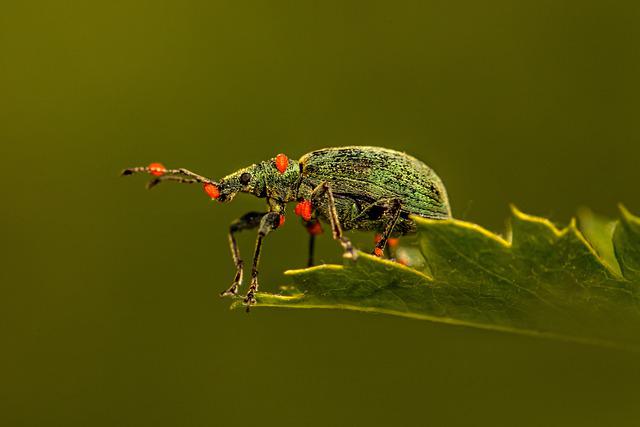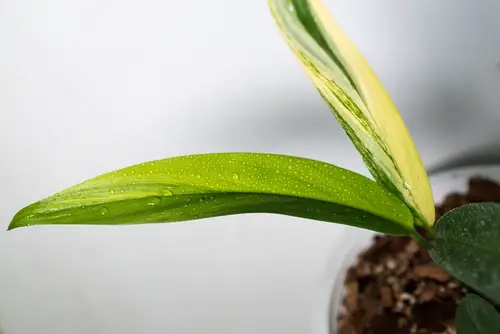There is a new arrival in town, quickly establishing as a must-have plant for any garden or home. The Epipremnum amplissimum variegated is a rare and easy-to-care-for vining plant that should be on the list for all plant enthusiasts.
Still, those aren’t the only reason this gem will be a perfect addition to your indoor or outdoor setting. Here is a detailed guide on other fascinating things and the Epipremnum amplissimum variegated care tips.
Related posts:
- Variegated Alocasia Dawn Plant, Grow & Care Guide 2022
- Variegated Giganteum Plant, Grow & Care Guide 2022
- Alocasia Odora Variegated Plant, Grow & Care Guide 2022
What is The Epipremnum Amplissimum Variegated

If you are searching for a beautiful and unique addition to your garden or house, then Epipremnum amplissimum variegated should be a top consideration. Although it’s a rare epiphytic plant of the family Araceae, it is rapidly becoming a top favorite for many plant parents.
Its ability to tolerate various growing conditions, low maintenance, and adaptability makes it a perfect choice for beginners and experienced plant enthusiasts. Epipremnum Amplissimum Variegated is mainly known for its long sword-shaped leaves.
Still, it’s not uncommon for this unique epiphytic plant to exhibit random leaf shapes as it matures. This particular feature primarily depends on the growing conditions, such as the amount of light.
Epipremnum amplissimum thrives better if you provide it with some climbing support, such as a moss pole. In the wild, notably in its natural habitats in tropical Australia and New Guinea, E. amplissimum climbs trees clinging onto them with its aerial roots.
However, you don’t have to worry if you can’t provide climbing support to this plant. It will still grow compactly and offer an ornamental and decorative addition to any landscape.
Origin and Classification
Epipremnum amplissimum variegated also goes by the name Rhaphidophora amplissima or Pothos ampliofa. It’s an epiphytic plant in the genus Epipremnum and family Araceae. Originally, Epipremnum amplissimum was native to New Guinea and Australia.
It thrives in swampy environments and rainforest areas. In its natural habitat, this houseplant is a climber that anchors onto trees with its aerial trees.
The most attractive feature of the Epipremnum amplissimum that makes it an ideal household plant is its adaptability and easy maintenance. Despite its natural requirements, Epipremnum amplissimum can thrive as an indoor plant under various conditions. It will bloom in any corner of your house as a starting point if you expose it to medium light.
Features of Epipremnum Amplissimum Variegated
Acquiring your first Epipremnum amplissimum can be confusing if you aren’t familiar with the plant features. The good news is that this ornamental plant has several characteristics that distinguish it from other Epipremnum plants if you pay close attention to the following outlined features. .
1. Leaves
The most notable feature of the Pothos ampliofa is its elongated, narrow, and green leaves with hints of pale bluish-gray color. When young, the leaves are somewhat soft-textured.
This plant’s leaves become larger and more fenestrated when provided with climbing support such as a moss pole. They can widen up to 60 cm long. Also, they tend to develop a hard texture and lose their pale-bluish-gray variegations. Still, it’s not uncommon for mature E. amplissimum leaves to retain some grayish markings.
2. Height
As outlined earlier in the post, the Epipremnum amplissimum variegated is a climber. In its natural habitat, the rainforest of Papua New Guinea, this plant climbs trees as a vine. This plant is unique in your house since it hangs or grows in various directions, clinging onto nearby equipment. For example, it can thrive up, down, or along a bookshelf. The standard size of an indoor Epipremnum amplissimum variegated is 30 cm long.
3. Roots and Stem
The Epipremnum amplissimum variegated is an evergreen vining plant with a 3cm wide stem and adventitious roots. Moreover, the roots are covered with a pale, corky bark. Due to this plant’s small stem, it’s best to provide it with climbing support allowing it to grow taller. Also, mature leaves can be somewhat heavy for the stem, making them appear as if cascading down.
Basic Care of Epipremnum Amplissimum Variegated

Although Epipremnum amplissimum variegated is a low-maintenance plant and an exciting choice for beginners and all plant enthusiasts, it still requires proper care to light up your house.
One of the most important factors to remember when caring for this gem is placing it in the right spot. That is, placing it in an area where it can climb and has access to medium light.
Here is an extensive list of proper conditions to ensure your E. amplissimum flourishes as an indoor or gardening plant.
1. Light
This plant thrives when exposed to bright indirect light. However, the leaves will scorch if you expose them to the hot midday sun. On the other hand, placing it on a shady corner with limited access to sunlight ( morning and evening ) provides the optimal condition for your E. amplissimum to flourish happily.
2. Temperature
Again, the most desirable feature of this gem is its low maintenance and adaptability. This is especially true considering it prefers warm temperatures of 18-29 degrees celsius ( 64-84 Fahrenheit). Therefore, the E. amplissimum can do well in most environments and seasons.
However, during winter, or in climates recording less than 15 degrees celsius ( 59 Fahrenheit ), it’s best to transfer it to a warmer spot before it gets frosty. Freezing temperatures tend to damage its exciting foliage. Also, this plant doesn’t flourish under cold drafts and sudden temperature changes.
3. Water Requirements
Epipremnum amplissimum variegated doesn’t need frequent watering. The accepted rule is to water the plant once weekly and allow the top 3cm of the soil to turn dry. Still, during warmer seasons and its growth season ( summer and spring ), this plant needs frequent watering or else, it will begin to droop.
Overwatering the E. amplissimum causes root rot, and the leaves will turn yellow. If you notice these characteristics, leave the soil to dry and skip a week or two of watering.
4. Soil and Potting
Epipremnum amplissimum variegated is a vining plant. As a result, it needs well-aerated and fast-draining potting soil. Even better, this plant has shown to thrive exceptionally well when grown on aroid mix.
Fortunately, you don’t have to sweat it to provide this requirement for your E. amplissimum or any other indoor plant. A quality potting soil mix consisting of peat moss and composted organic matter will give a perfect soil base for your plant.
Add worm castings to your potting soil to offer essential nutrients and minerals to your plant. Don’t forget to bring in perlite to ensure your soil has sufficient air and drains well. Finally, adding orchid bark to your aroid mix sets it apart from regular aroid soil by providing stable soil pH and aeration.
With these soil requirements, your E. amplissimum will flourish. And come propagation time, the process will be more streamlining.
Most importantly, repot your E. amplissimum when roots overgrow a pot. The spring season is the ideal time to repot or propagate your plant.
5. Humidity
This plant requires humidity levels ranging between 50-60%. As you can imagine, it can thrive in almost any environment, but to give it optimal care, ensure you mist it weekly. Morning is the suitable time to mist your Epipremnum amplissimum variegated, allowing the water plenty of time to evaporate before the evening.
6. Toxicity

Like most Epipremnum plants, the Pothos ampliofa contains toxic characteristics to humans and pets when ingested. Therefore, keep this plant away from children and pets.
7. Fertilizing
You have to be cautious when fertilizing your E. amplissimum. Note that fertilizing this plant more than its needed causes it to burn its foliage. In choosing the right fertilizer, organic fertilizer outranks all forms of artificial fertilizer since they are safe and slow releasing.
However, if you can’t put your hands on organic fertilizer or quality potting soil mix as illustrated above, you can use a balanced houseplant fertilizer that’s diluted to half strength. Only provide your plant with fertilizer once a month during its growing season. Also, ensure the soil is damp before fertilizing it with either organic or artificial fertilizer.
Note that fertilizing your plant during winter or late fall when it’s dormant can end in burnt roots and foliage.
8. Pruning Requirements

Another exciting feature of the Epipremnum amplissimum variegated that makes it an excellent house plant is that its roots never damage surfaces. Still, it’s important to trim its adventitious aerial roots if they become unruly for a space. Alternatively, you can tuck them inside the pot.
How to Propagate Epipremnum Amplissimum Variegated
Propagating E. amplissimum is quite an easy task. Propagation by stem cuttings is the best way to propagate your Epipremnum amplissimum variegated. Here are quick steps to handle this process:
- Select a segment of your E. amplissimum that has several roots. Then carefully cut the internodes between the roots. Stem sections of 10-15 cm long are ideal to cut.
- Next, place the plant in a new pot horizontally. Ensure the buds are facing upwards. Ensure the pot is filled with humus-rich soil mix.
- Place the plant in a shady place away from direct sunlight.
- After a few weeks, you will notice new shoots appearing. You can cut the stem sections into pieces and plant them again individually.
Easy-peasy right? Remember to propagate your plant during the growing months.
Common Problems Caring For E. Amplissimum
Although this plant is low-maintenance and can handle most conditions, it’s not uncommon for plant parents to encounter the following issues:
1. Pests

Mealy bugs, aphids, and spider mites pose a severe risk to your E. amplissimum if left untreated. These pests feed on the plant’s nutrients causing it to die. The most straightforward way to know your plant is pest infested is if the leaves accumulate silky webs or turn brown.
To treat pest infestation, spray the Epipremnum amplissimum variegated with a direct water stream. Also, wash the leaves with insecticidal soap. Even better, occasionally wipe dust and debris on your plant with a wet sponge or towel to keep it clean and pest free.
2. Root Rot
Root rot as a result of overwatering can be detrimental to your plant. If left untreated, it will spread to the stem and leaves. The most effective way to keep your E. amplissimum safe from root rot is watering only when necessary, using high porous pots and a soil mixture as highlighted above.
3. Yellowing / Dropping Leaves
This bacterial disease is a menace to Epipremnums, and the amplissimum variegated is no exception. This is primarily due to excess watering and poor pot drainage.
4. Sun Damage
If you expose your Epipremnum amplissimum variegated to direct midday sun, its leaves will scorch and eventually dry. Therefore, place your plant away from the direct midday sun in a shady environment.
Outro
Epipremnum amplissimum variegated is an excellent choice for plant parents looking to add a decorative touch to their household while looking for low-maintenance. This plant’s remarkable climbing effort and gorgeous dark green leaves will offer an exciting view to any room. Ensure you replicate this plant’s natural habitat, a balanced watering schedule, dim indirect light, and proper aeration to get the best out of it.
Frequently Asked Questions
Is Epipremnum Amplissimum Variegated Rare?
Yes. It’s a pretty rare aroid, but it’s quickly becoming a favorite among many plant enthusiasts due to its easy-going and exciting features.
What’s The Care Level of Epipremnum Amplissimum Variegated?
It’s a low-maintenance plant excellent for both beginners and plant-enthusiasts. If you place it in a shady corner of a room with climbing support, water it weekly, and ensure the soil is well-aerated, your E. amplissimum will require minimal attention.
Why is My Epipremnum Amplissimum Variegated Showing Leaf Spot?
Leaf spot is a common bacterial disease if you overwater or underwater and fail to properly take care of your Epipremnum amplissimum. Destroy the affected leaves and maintain a healthy watering routine to get rid of the leaf spot.

Hey, I’m Lisa and I’ve been an avid gardener for over 30 years. I love writing, talking and living in the garden! Feel free to connect with me on my socials below

